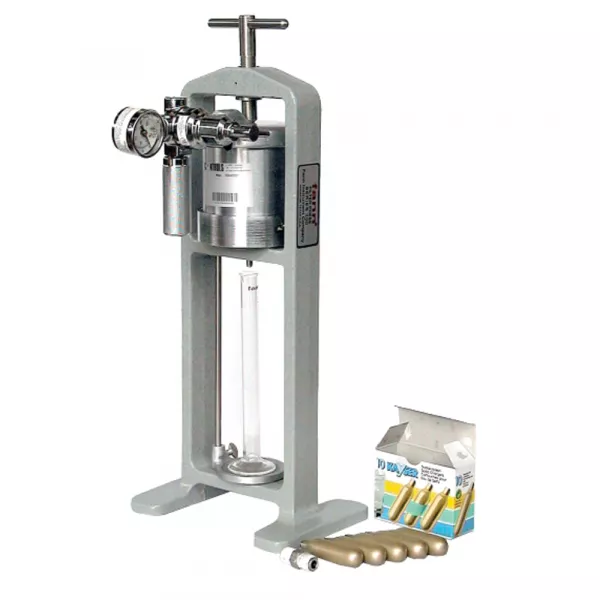API Fluid Loss
The ability of a mud to filter or form a solid layer (called a filter cake) is measured using a device called a filter press. This test checks how quickly liquid passes through a filter paper under specific conditions of time, temperature, and pressure. After the test, the thickness of the solid filter cake left on the filter paper is measured. The filter press used must meet the standards set by the API (American Petroleum Institute) and follow their recommended procedures. The API fluid loss test is done at room temperature and 100 psi pressure. The result is recorded as the amount of liquid (in milliliters) that passes through the filter paper in 30 minutes.
Instruments
The instrument includes:
- A mud cell assembly.
- A pressure regulator and gauge, which are mounted on the top of the carrying case or the top part of the lab unit.
To set up the test:
- The mud cell is connected to the pressure regulator using a coupling adapter. This is done by inserting the male end of the cell into the female end of the filter press and turning it clockwise by 1/4 turn. Some cells don’t have this locking mechanism and simply need to be inserted into the correct coupling.
- The bottom of the cell is sealed with a lid that has a screen or grid. The lid is pressed firmly against the filter paper and turned to the right until it is hand-tight. This ensures the filter paper is pressed against an O-ring placed at the base of the cell.
- Pressure is provided by a small carbon dioxide (CO₂) gas cartridge. Important: Do not use nitrous oxide (N₂O or “Whippets”).
- A bleed-off valve is included to release pressure before disconnecting the cell.
This setup ensures the test is performed safely and accurately according to API standards.
